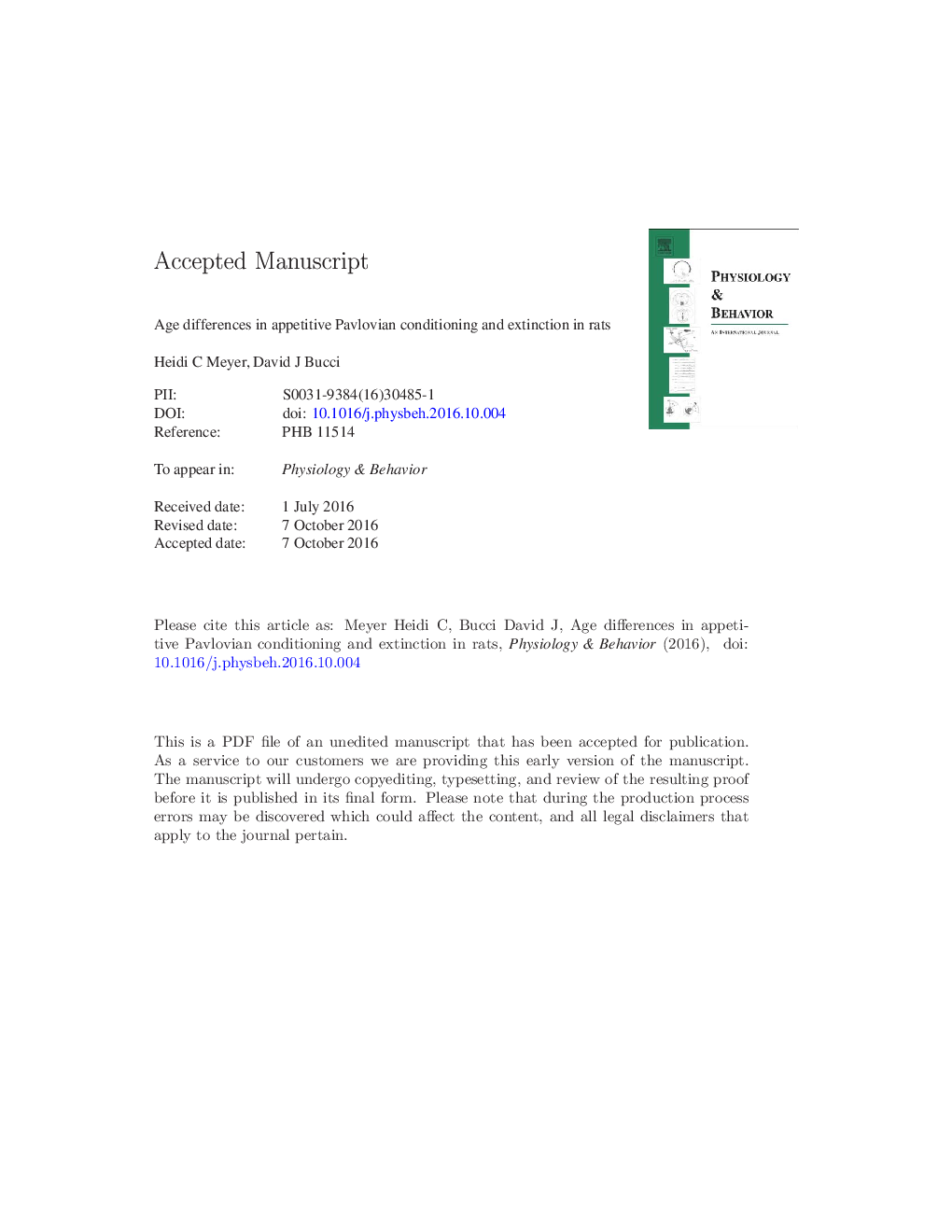| کد مقاله | کد نشریه | سال انتشار | مقاله انگلیسی | نسخه تمام متن |
|---|---|---|---|---|
| 5922545 | 1571152 | 2016 | 66 صفحه PDF | دانلود رایگان |
عنوان انگلیسی مقاله ISI
Age differences in appetitive Pavlovian conditioning and extinction in rats
ترجمه فارسی عنوان
اختلاف سن در حالت تهوع و انقراض پاولویو در موش صحرایی
دانلود مقاله + سفارش ترجمه
دانلود مقاله ISI انگلیسی
رایگان برای ایرانیان
کلمات کلیدی
بلوغ، یادگیری، تقویت، اشتها آور پاولوویان،
موضوعات مرتبط
علوم زیستی و بیوفناوری
بیوشیمی، ژنتیک و زیست شناسی مولکولی
فیزیولوژی
چکیده انگلیسی
Mounting evidence indicates that adolescents exhibit heightened sensitivity to rewards and reward-related cues compared to adults, and that adolescents are often unable to exert behavioral control in the face of such cues. Moreover, differences in reward processing during adolescence have been linked to heightened risk taking and impulsivity. However, little is known about the processes by which adolescents learn about the appetitive properties of environmental stimuli that signal reward. To address this, Pavlovian conditioning procedures were used to test for differences in excitatory conditioning between adult and adolescent rats using various schedules of reinforcement. Specifically, separate cohorts of adult and adolescent rats were trained under conditions of consistent (continuous) or intermittent (partial) reinforcement. We found that the acquisition of anticipatory responding to a continuously-reinforced cue proceeded similarly in adolescents and adults. In contrast, responding increased at a greater rate in adolescents compared to adults during presentations of a partially-reinforced cue. We subsequently compared the ability of adolescent and adult rats to dynamically adjust the representation of a reward-predictive cue during extinction trials, in which a secondary inhibitory representation is acquired for the previously-reinforced stimulus. We observed significant age differences in the ability to flexibly update cue representations during extinction, in that the appetitive properties of cues with a history of either continuous or partial reinforcement persisted to a greater extent in adolescents relative to adults.
ناشر
Database: Elsevier - ScienceDirect (ساینس دایرکت)
Journal: Physiology & Behavior - Volume 167, 1 December 2016, Pages 354-362
Journal: Physiology & Behavior - Volume 167, 1 December 2016, Pages 354-362
نویسندگان
Heidi C Meyer, David J Bucci,
